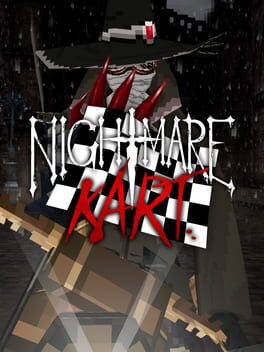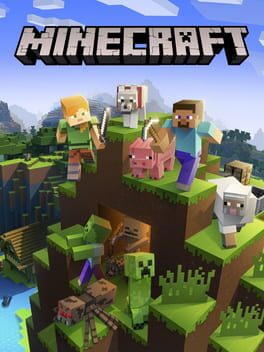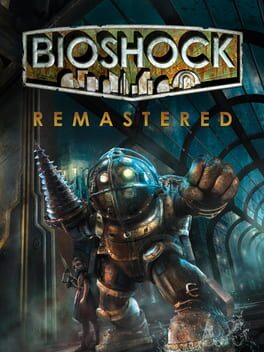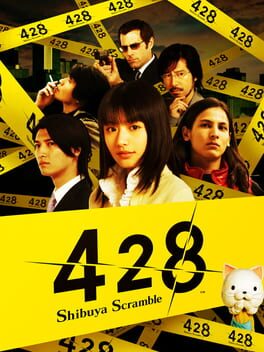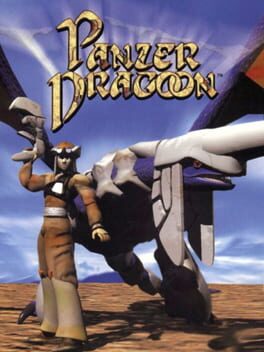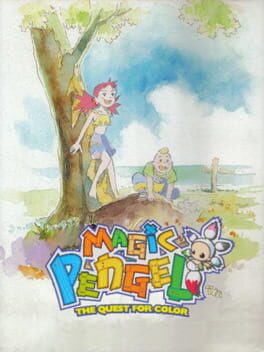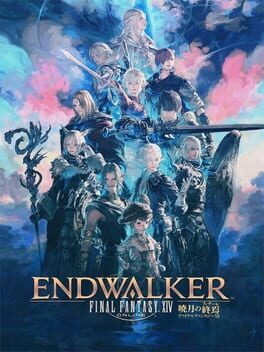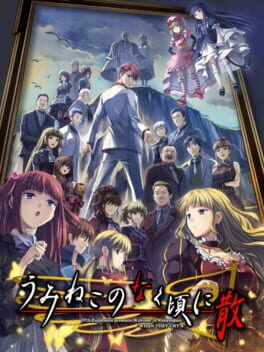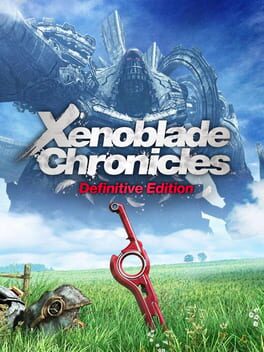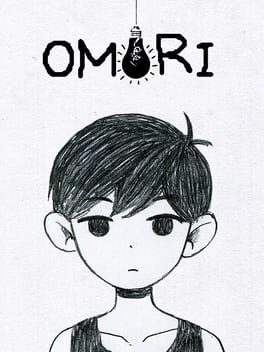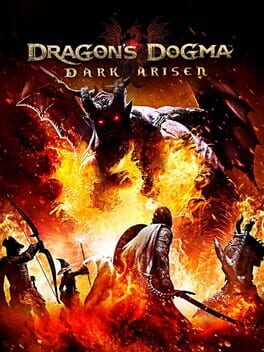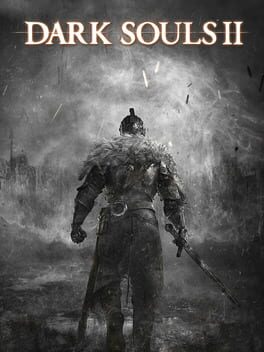AGlassOfWater
391 reviews liked by AGlassOfWater
Banana
2024
Do you see banana man
Hopping over on the white hot sand
Here he come with some for me
Freshly taken from banana tree (one, two, three, four)
Banana man me want a ton
Give me double and a bonus one
Give me more for all me friends
This banana flow never end
Do you want a banana?
Peel it down and go mm mm mm mm
Do you want a banana?
This banana for you
Tonight we dance around the flame
Then we get to play the spirit game
Spirit names we shout out loud
Shake the thunder from the spirit cloud
All the songbirds in the tree
Chant a tune to let the spirits free
Then we see them in the night
Spirits jumpin' by the fire light
Do you want a banana? (Do you want a banana)
Peel it down and go mm mm mm mm
Do you want a banana? (Do you want a banana)
This banana for you
Look you, you're too uptight you know
You can laugh and kick it back and go (we)
But without a rhythm or a rhyme
You do not banana all the time
Fly away from city on the run
Try to make a little fun
Look you come to the bungalow
African't you tell me don't you so
Don't you love the bumping of the drum
Make you shake until the bum go numb
Let the bongo play until you drop
This banana never stop (never stop, never stop)
Forget all your troubles and go with the flow
Forget about whatever you may never know
Like whether whatever you are doing is whatever you should
And whether anything you do is every really any good
And then forget about banana when it sticks in your throat
And when they make you want to bellow but you're stuck in a choke
And you forget about the yellow from the beckoning man
He'll make you take another and make a mock of your plan
Bungalay bungalo make up your mind and tell me no umm shh
Well it's nine o'clock and it's getting dark
And the sun is falling from the sky
I've never left so early and you may wonder why
Tomorrow morning on the plane
No banana make you go insane
Floating back to busy town
No banana make you want to frown
Do you want a banana? (Do you want a banana?)
Peel it down and go mm mm mm mm
Do you want a banana?
This banana for you
Hopping over on the white hot sand
Here he come with some for me
Freshly taken from banana tree (one, two, three, four)
Banana man me want a ton
Give me double and a bonus one
Give me more for all me friends
This banana flow never end
Do you want a banana?
Peel it down and go mm mm mm mm
Do you want a banana?
This banana for you
Tonight we dance around the flame
Then we get to play the spirit game
Spirit names we shout out loud
Shake the thunder from the spirit cloud
All the songbirds in the tree
Chant a tune to let the spirits free
Then we see them in the night
Spirits jumpin' by the fire light
Do you want a banana? (Do you want a banana)
Peel it down and go mm mm mm mm
Do you want a banana? (Do you want a banana)
This banana for you
Look you, you're too uptight you know
You can laugh and kick it back and go (we)
But without a rhythm or a rhyme
You do not banana all the time
Fly away from city on the run
Try to make a little fun
Look you come to the bungalow
African't you tell me don't you so
Don't you love the bumping of the drum
Make you shake until the bum go numb
Let the bongo play until you drop
This banana never stop (never stop, never stop)
Forget all your troubles and go with the flow
Forget about whatever you may never know
Like whether whatever you are doing is whatever you should
And whether anything you do is every really any good
And then forget about banana when it sticks in your throat
And when they make you want to bellow but you're stuck in a choke
And you forget about the yellow from the beckoning man
He'll make you take another and make a mock of your plan
Bungalay bungalo make up your mind and tell me no umm shh
Well it's nine o'clock and it's getting dark
And the sun is falling from the sky
I've never left so early and you may wonder why
Tomorrow morning on the plane
No banana make you go insane
Floating back to busy town
No banana make you want to frown
Do you want a banana? (Do you want a banana?)
Peel it down and go mm mm mm mm
Do you want a banana?
This banana for you
Nightmare Kart
2024
Minecraft
2011
Lorelei and the Laser Eyes feels like an anachronism. I don’t just mean this from how the game haphazardly scatters documents from 1847 and 2014 throughout the hotel set in 1962, or how it references multiple past eras of gaming with PS1 survival-horror fixed camera angles or DOS-inspired 1-bit adventure game segments hidden away on floppy disks, though these elements certainly play their part in creating what developer Simogo refers to as “collage of styles, ideas, and disparate inspirations.” No, what instantly caught my attention was how uncompromising yet thoughtful the game felt. In an era where most developers seem content to simply pay lip service to the great mystery/adventure games of old while over-simplifying their gameplay mechanics, Simogo seems to have figured out the formula of creating a final product that feels intricately designed, yet ultimately accessible.
I’ll admit that I’m not too familiar with Simogo’s previous work; the only other game I’ve played by them is Sayonara Wild Hearts. That said, I would not have immediately guessed that Lorelei was by the same developers from my first hour alone. In some ways, Lorelei presents an interesting foil to Sayonara. Sayonara’s persisting strength is its grasp on harmony: the epitome of what is essentially a playable music video, it’s pure and immediate gratification racking up points to the beat in this flashy and lush arcade game. On the other hand, Lorelei feels deliberately constructed to emphasize its dissonance. From the uncomfortably quiet manor clashing with the occasional audible off-screen disruption to the vibrating monochrome textures interspersed with low poly environment, nothing seems right in its place. It’s a much slower burn than Sayonara as well, with most players taking fifteen hours or more (in comparison to Sayonara’s two hour runtime) to navigate the sprawling hotel with no hand-holding provided whatsoever.
As different as these two titles appear however, they do have one thing in common: minimalism. For example, both games require just a d-pad/joystick and a single button to be played. Sayonara gets away with this because the available actions on input feel clearly telegraphed by the visuals and generally boil down to moving and timed dodges with the music. Lorelei similarly gets away with this because it deemphasizes more complex/technical interactions (i.e. the usage suite of adventure game verbs in look, touch, obtain, etc) with sheer puzzle intuition. Simogo describes this as forcing the player to “get a deeper understanding… and connection to [the world]” and just like Sayonara, “wanted the complexity of the game to revolve around this, and not dexterity.”
What makes this particularly impressive is how Simogo was able to strike a fair balance between simplicity and variety. According to the game’s development page, the game became “a very iterative toy box” where many different systems conceptualized over the game’s development cycle could interact and interplay with one another in different ways. Interestingly, I found that most of the solutions to these different puzzles were not that difficult or complex to determine. Even so, despite Lorelei’s simple controls and straightforward objective (figuring out passwords/key phrases to unlock new areas and information), the game is able to successfully obfuscate the means to achieve said objective by drastically changing the means in which information is presented to the player, for instance by using different camera angles and systems that allowed them to “change a lot of rendering parameters on the fly” from the aforementioned iterative toy box. Additionally, Simogo highlights key details from clues to ensure that players don’t get too confused, but leave enough ambiguity by never outright leading the players onto specific logic trains and refusing to provide any specific assistance (no in-game hint system and no specific feedback aside from telling players if they’re right/wrong). The result is a confident final product that understands the persisting strength of a good puzzle adventure game: a game that gives the player all the information they need to succeed while giving them the room to work out the connections themselves, and a game that constantly surprises the player with new opportunities to intuitively understand the world around them without ever feeling too frustrated by unfamiliar mechanics.
I do have to admit however, that there are a few instances where Lorelei’s minimalism and uncompromising nature can backfire. For instance, the lack of detailed player feedback aside from a right/wrong sound effect usually isn’t a significant deterrent, given that players can fine-tune most of the game’s one-variable solutions and are encouraged to tackle the hotel’s many branching paths and puzzles at their own pace, since they may not even have the pertinent information required and might have to work out other puzzles to obtain said information. However, certain late-game puzzles require multiple sets of answers (ex: a computer that requires three different types of phrases in a password), and it can be frustrating getting barricaded by such puzzles and not knowing which part of the answer requires more investigation. I’ll also echo some of the previous complaints regarding the controls, because while I appreciate that Simogo has crafted a base system where more complex controls aren’t required, I also don’t think that it’s a huge ask to add a “cancel/back” input for a second button. As a result, it takes significantly more scrolling to get out of menus or spamming random inputs to erroneously enter passwords if I want to back out of a puzzle, and the amount of wasted time per menu/puzzle really builds up over a playthrough.
While I did find the somewhat telegraphed ending slightly underwhelming given how elaborately the game wove its lore into its many clues, I nevertheless really savored my time with Lorelei. I might not have laser eyes, but I can certainly see this game’s approach upon system cohesion influencing many puzzle adventure games to come. As it stands, it’s another solid entry for Simogo’s innovative yet familiar library, and I’ll be thinking about its many secrets for quite some time. Perhaps it's finally time to delve into Device 6.
I’ll admit that I’m not too familiar with Simogo’s previous work; the only other game I’ve played by them is Sayonara Wild Hearts. That said, I would not have immediately guessed that Lorelei was by the same developers from my first hour alone. In some ways, Lorelei presents an interesting foil to Sayonara. Sayonara’s persisting strength is its grasp on harmony: the epitome of what is essentially a playable music video, it’s pure and immediate gratification racking up points to the beat in this flashy and lush arcade game. On the other hand, Lorelei feels deliberately constructed to emphasize its dissonance. From the uncomfortably quiet manor clashing with the occasional audible off-screen disruption to the vibrating monochrome textures interspersed with low poly environment, nothing seems right in its place. It’s a much slower burn than Sayonara as well, with most players taking fifteen hours or more (in comparison to Sayonara’s two hour runtime) to navigate the sprawling hotel with no hand-holding provided whatsoever.
As different as these two titles appear however, they do have one thing in common: minimalism. For example, both games require just a d-pad/joystick and a single button to be played. Sayonara gets away with this because the available actions on input feel clearly telegraphed by the visuals and generally boil down to moving and timed dodges with the music. Lorelei similarly gets away with this because it deemphasizes more complex/technical interactions (i.e. the usage suite of adventure game verbs in look, touch, obtain, etc) with sheer puzzle intuition. Simogo describes this as forcing the player to “get a deeper understanding… and connection to [the world]” and just like Sayonara, “wanted the complexity of the game to revolve around this, and not dexterity.”
What makes this particularly impressive is how Simogo was able to strike a fair balance between simplicity and variety. According to the game’s development page, the game became “a very iterative toy box” where many different systems conceptualized over the game’s development cycle could interact and interplay with one another in different ways. Interestingly, I found that most of the solutions to these different puzzles were not that difficult or complex to determine. Even so, despite Lorelei’s simple controls and straightforward objective (figuring out passwords/key phrases to unlock new areas and information), the game is able to successfully obfuscate the means to achieve said objective by drastically changing the means in which information is presented to the player, for instance by using different camera angles and systems that allowed them to “change a lot of rendering parameters on the fly” from the aforementioned iterative toy box. Additionally, Simogo highlights key details from clues to ensure that players don’t get too confused, but leave enough ambiguity by never outright leading the players onto specific logic trains and refusing to provide any specific assistance (no in-game hint system and no specific feedback aside from telling players if they’re right/wrong). The result is a confident final product that understands the persisting strength of a good puzzle adventure game: a game that gives the player all the information they need to succeed while giving them the room to work out the connections themselves, and a game that constantly surprises the player with new opportunities to intuitively understand the world around them without ever feeling too frustrated by unfamiliar mechanics.
I do have to admit however, that there are a few instances where Lorelei’s minimalism and uncompromising nature can backfire. For instance, the lack of detailed player feedback aside from a right/wrong sound effect usually isn’t a significant deterrent, given that players can fine-tune most of the game’s one-variable solutions and are encouraged to tackle the hotel’s many branching paths and puzzles at their own pace, since they may not even have the pertinent information required and might have to work out other puzzles to obtain said information. However, certain late-game puzzles require multiple sets of answers (ex: a computer that requires three different types of phrases in a password), and it can be frustrating getting barricaded by such puzzles and not knowing which part of the answer requires more investigation. I’ll also echo some of the previous complaints regarding the controls, because while I appreciate that Simogo has crafted a base system where more complex controls aren’t required, I also don’t think that it’s a huge ask to add a “cancel/back” input for a second button. As a result, it takes significantly more scrolling to get out of menus or spamming random inputs to erroneously enter passwords if I want to back out of a puzzle, and the amount of wasted time per menu/puzzle really builds up over a playthrough.
While I did find the somewhat telegraphed ending slightly underwhelming given how elaborately the game wove its lore into its many clues, I nevertheless really savored my time with Lorelei. I might not have laser eyes, but I can certainly see this game’s approach upon system cohesion influencing many puzzle adventure games to come. As it stands, it’s another solid entry for Simogo’s innovative yet familiar library, and I’ll be thinking about its many secrets for quite some time. Perhaps it's finally time to delve into Device 6.
BioShock Remastered
2016
Elden Ring
2022
I’ve been thinking a lot about storytelling in video games lately. Well, storytelling as a whole actually. What exactly makes a fictional world feel compelling to me? How should you best spin a yarn as to make the characters breathe, their struggles resonate, and their victories triumphant? Most importantly, if a writer did have the vision and the wherewithal to execute said vision, then how could they best convince their audience that their vision was worth their time?
This week, I might have come a step closer to realizing those answers by revisiting an old favorite of mine.
428: Shibuya Scramble is not just your ordinary traditional visual novel. It’s a crime thriller, a romantic comedy, and an investigative journalism drama all rolled into one. That description alone could sell the game, but the crazy part is that the narrative is just the icing on top of this deceptively layered and charismatic tale. The game's greatest strength is not just what it has to say, but rather how it says it.
As I've discussed previously, many story-heavy games have difficulty marrying their storytelling and their gameplay, often choosing to stratify their game into separate sections of explicit narrative and explicit gameplay. 428 Shibuya Scramble does not struggle with this whatsoever, for the interaction with the narrative is the gameplay and it presents its story in such a way where every detail matters. You see, 428: Shibuya Scramble operates in hourly time slots with several protagonists at once. The goal is to guide each protagonist on their separate storyline and ensure that every protagonist makes it to the end of each hour by making the correct decisions and avoiding untimely demise through bad ends. However, there’s a catch. Protagonists can reach bad ends on their own paths even if every decision they make within their contained storyline is “correct.” This is because these different storylines intersect one another in various ways, and decisions made with one character will ultimately echo throughout the hour, affecting the other protagonists in unforeseen ways.
As such, the player isn’t doing anything mechanically complex aside from reading text and picking the right options most of the time, which means that like the best detective games, 428 is really about the game outside of the game. The player has to figure out how the butterfly effect ripples across each hour, even as characters often impact one another without ever coming face to face. For example, one of the characters can become incapacitated by consuming a potent energy drink on the job; you can avoid this bad end by making sure an earlier character fails to provide his detective partner with the lethal sample. While the nature of these intersections is often unclear, 428 revels in this uncertainty. It’s not content with simply using its bad ends as punishments; rather, it grasps these bad ends as opportunities to inject additional lore and guide the player towards the truth. These bad ends are often light-hearted and comedic just as they are valuable learning opportunities, and somehow the game walks the tightrope between solemnity and levity without ever losing sincerity. Simply put, most story-heavy games are constantly asking the five Ws, but 428 Shibuya Scramble is one of the rare whimsical games that dares ask “What if?”
On a similar note, a lot of players tend to get frustrated by 428’s habit of barricading individual protagonist paths with “KEEP OUT” banners, but I find this mechanic to be a stroke of genius. In order to clear these barricades, players are forced to traverse other protagonists’ stories in the meanwhile and search for a “JUMP” point linking them back to the original blocked protagonist. By doing so, they’re often hopping around the hour and viewing events from multiple parallel perspectives, gathering more information to better grasp how the timelines intertwine. Moreover, the game fully commits to this idea of rounding out its narrative by even hiding JUMP points behind certain decisions that would otherwise have no bearing upon story events (i.e. “flavor text questions/decisions”) and certain TIPs (blue colored text that when selected, provides additional background). This keeps the player vigilant, as they’re constantly on the prowl for connections while soaking in every detail and considering every possibility to push the plot forward.
Of course, this is not to take away from the game’s multitude of other strengths. For instance, consider the game’s sound design. From hurried footsteps and screeching cars in high-speed chases to distant explosions and sirens spelling imminent doom, Chunsoft knew just how to punctuate every moment with appropriate sound effects. Another obvious selling point is 428’s reliance upon live action stills and full motion video, which aside from standing out from other sketched and animated visual novels, provides the game a sense of immersion and realism that interestingly often contrasts with the game’s over-the-top sense of humor. Finally, the actors do a great job emoting and infusing their lines with personality despite the lack of voice acting. Alongside the phenomenal character design, written in such a way where every character has obvious flaws yet remain every bit relatable, there’s a certain charm to 428 Shibuya Scramble that many of its peers fail to imitate. As a complete and tightly-knit package, its artistic decisions and gameplay mechanics do not simply capture Shibuya; they perpetuate the energy of the city, enthralling and surprising the player at every turn.
I’m often reluctant to revisit beloved titles. More often than not, giving old favorites another spin with a more critical eye or even thinking about them for too long causes them to deteriorate somewhat in my mind, forcing me to confront my prior nostalgia. It’s never a great feeling to question yourself if something you once loved was really all that great to begin with. 428 is the exact opposite of this. Don’t get me wrong; the game does have some rough points. The inability to adjust text speed and skip previously read text can be a huge ask for players with limited time (though if you’re playing on PC, the unofficial text speed patch alleviates this somewhat), and I find myself agreeing with others in that the true ending leaves something to be desired. I won’t deny that I had some apprehensions upon replaying yet another memorable classic.
Yet somehow, this game has lived rent-free in my head for over half a decade. I had intended to replay it for just an hour or two to refresh my palette, as I had already 100%ed it and wanted to move onto newer and grander adventures. In spite of that, I found myself with the exact opposite problem. I simply could not put the game down. 428 Shibuya Scramble is the rare example of a game that to me, never stops getting better. Playing through it again immediately reminded me of why I fell in love with video games to begin with, and it didn’t matter that I had seen the destination already; the thrill of the journey was enough to make me return. I’m sure that I could ponder more areas of improvement and potential fixes, though honestly, I can’t bring myself to care. There aren’t many games that I unabashedly adore and wish for more, but there are even fewer games that manage to spark my Imagination and leave me content with what I have. At the end of the day, 428: Shibuya Scramble is not just a triumph of the medium; it's a triumph of human inevitability, gathering momentum until coincidence and fate become reality. I may have become more cynical over time, but it's moments like these that prove that sometimes, it really does pay to believe.
This week, I might have come a step closer to realizing those answers by revisiting an old favorite of mine.
428: Shibuya Scramble is not just your ordinary traditional visual novel. It’s a crime thriller, a romantic comedy, and an investigative journalism drama all rolled into one. That description alone could sell the game, but the crazy part is that the narrative is just the icing on top of this deceptively layered and charismatic tale. The game's greatest strength is not just what it has to say, but rather how it says it.
As I've discussed previously, many story-heavy games have difficulty marrying their storytelling and their gameplay, often choosing to stratify their game into separate sections of explicit narrative and explicit gameplay. 428 Shibuya Scramble does not struggle with this whatsoever, for the interaction with the narrative is the gameplay and it presents its story in such a way where every detail matters. You see, 428: Shibuya Scramble operates in hourly time slots with several protagonists at once. The goal is to guide each protagonist on their separate storyline and ensure that every protagonist makes it to the end of each hour by making the correct decisions and avoiding untimely demise through bad ends. However, there’s a catch. Protagonists can reach bad ends on their own paths even if every decision they make within their contained storyline is “correct.” This is because these different storylines intersect one another in various ways, and decisions made with one character will ultimately echo throughout the hour, affecting the other protagonists in unforeseen ways.
As such, the player isn’t doing anything mechanically complex aside from reading text and picking the right options most of the time, which means that like the best detective games, 428 is really about the game outside of the game. The player has to figure out how the butterfly effect ripples across each hour, even as characters often impact one another without ever coming face to face. For example, one of the characters can become incapacitated by consuming a potent energy drink on the job; you can avoid this bad end by making sure an earlier character fails to provide his detective partner with the lethal sample. While the nature of these intersections is often unclear, 428 revels in this uncertainty. It’s not content with simply using its bad ends as punishments; rather, it grasps these bad ends as opportunities to inject additional lore and guide the player towards the truth. These bad ends are often light-hearted and comedic just as they are valuable learning opportunities, and somehow the game walks the tightrope between solemnity and levity without ever losing sincerity. Simply put, most story-heavy games are constantly asking the five Ws, but 428 Shibuya Scramble is one of the rare whimsical games that dares ask “What if?”
On a similar note, a lot of players tend to get frustrated by 428’s habit of barricading individual protagonist paths with “KEEP OUT” banners, but I find this mechanic to be a stroke of genius. In order to clear these barricades, players are forced to traverse other protagonists’ stories in the meanwhile and search for a “JUMP” point linking them back to the original blocked protagonist. By doing so, they’re often hopping around the hour and viewing events from multiple parallel perspectives, gathering more information to better grasp how the timelines intertwine. Moreover, the game fully commits to this idea of rounding out its narrative by even hiding JUMP points behind certain decisions that would otherwise have no bearing upon story events (i.e. “flavor text questions/decisions”) and certain TIPs (blue colored text that when selected, provides additional background). This keeps the player vigilant, as they’re constantly on the prowl for connections while soaking in every detail and considering every possibility to push the plot forward.
Of course, this is not to take away from the game’s multitude of other strengths. For instance, consider the game’s sound design. From hurried footsteps and screeching cars in high-speed chases to distant explosions and sirens spelling imminent doom, Chunsoft knew just how to punctuate every moment with appropriate sound effects. Another obvious selling point is 428’s reliance upon live action stills and full motion video, which aside from standing out from other sketched and animated visual novels, provides the game a sense of immersion and realism that interestingly often contrasts with the game’s over-the-top sense of humor. Finally, the actors do a great job emoting and infusing their lines with personality despite the lack of voice acting. Alongside the phenomenal character design, written in such a way where every character has obvious flaws yet remain every bit relatable, there’s a certain charm to 428 Shibuya Scramble that many of its peers fail to imitate. As a complete and tightly-knit package, its artistic decisions and gameplay mechanics do not simply capture Shibuya; they perpetuate the energy of the city, enthralling and surprising the player at every turn.
I’m often reluctant to revisit beloved titles. More often than not, giving old favorites another spin with a more critical eye or even thinking about them for too long causes them to deteriorate somewhat in my mind, forcing me to confront my prior nostalgia. It’s never a great feeling to question yourself if something you once loved was really all that great to begin with. 428 is the exact opposite of this. Don’t get me wrong; the game does have some rough points. The inability to adjust text speed and skip previously read text can be a huge ask for players with limited time (though if you’re playing on PC, the unofficial text speed patch alleviates this somewhat), and I find myself agreeing with others in that the true ending leaves something to be desired. I won’t deny that I had some apprehensions upon replaying yet another memorable classic.
Yet somehow, this game has lived rent-free in my head for over half a decade. I had intended to replay it for just an hour or two to refresh my palette, as I had already 100%ed it and wanted to move onto newer and grander adventures. In spite of that, I found myself with the exact opposite problem. I simply could not put the game down. 428 Shibuya Scramble is the rare example of a game that to me, never stops getting better. Playing through it again immediately reminded me of why I fell in love with video games to begin with, and it didn’t matter that I had seen the destination already; the thrill of the journey was enough to make me return. I’m sure that I could ponder more areas of improvement and potential fixes, though honestly, I can’t bring myself to care. There aren’t many games that I unabashedly adore and wish for more, but there are even fewer games that manage to spark my Imagination and leave me content with what I have. At the end of the day, 428: Shibuya Scramble is not just a triumph of the medium; it's a triumph of human inevitability, gathering momentum until coincidence and fate become reality. I may have become more cynical over time, but it's moments like these that prove that sometimes, it really does pay to believe.
Pikmin
2001
The secret behind Pikmin’s success was not that it somehow outclassed classic real-time strategy franchises, but rather that it was never competing with them to begin with. According to Shigeru Miyamoto, he came up with the idea for Pikmin one day when he observed a group of ants carrying leaves together into their nest. Miyamoto then imagined a game focused on cooperation rather than competition; he asked, “Why can’t everyone just move together in the same direction, carrying things as a team?” Nintendo EAD’s design philosophy went along with this line of reasoning, melding design mechanics from different genres to create an entirely new yet familiar experience. As a result, instead of competing against other players in Pikmin akin to classic RTS games, Pikmin forces players to explore and compete with the very environment itself by introducing puzzle-exploration and survival mechanics. It made sense in the end; after all, real-time strategy is concerned with minimizing time spent to get a competitive edge over opponents, and what better way to translate this than to force players to master their understanding over the terrain itself, managing and optimizing the one resource which governs them all?
Perhaps Nintendo’s greatest challenge was figuring out how to translate a genre considered by many to be niche and technical to an intuitive yet layered game, and even more so, translating classic actions from a mouse and keyboard allowing for such complexity to a suite of simplified controls using a gamepad. Coming from the other side as someone who played Starcraft as a kid and didn’t get into Pikmin until recently however, I’m surprised at how well EAD’s tackled this endeavor. Classic RTS games focus upon base-building and resource gathering through the micromanagement of units. Pikmin’s take upon this is to introduce a dichotomy between the player character Captain Olimar, who is incapable of doing anything by himself but can issue commands to the units only he can create by plucking out of the soil, and the Pikmin, who are essentially brainless but represent the units that must do everything. The player as Olimar must be present to figure out exactly how to best traverse and exploit the environment around him (replacing the base-building with management/prioritization puzzles) while the Pikmin provide bodies to construct, move, and attack the world around them. However, the Pikmin’s AI is fairly limited and as a result, Pikmin will sit around helplessly once they finish their actions and often get distracted by nearby objects while moving around, which is where the micromanagement kicks in. Therefore, the player has to decide how to best build up their supply of Pikmin to allocate tasks to surmount bottlenecks while exploring and opening the world, all while working against the limited thirty-day timer throughout the game’s five areas.
A part of me expected to really struggle with the gamepad while playing Pikmin, but the available actions on offer allow for a surprising degree of control despite the simplification. For instance, consider Olimar’s whistle; as a substitute for dragging and clicking to select units on PC, the whistle on the GameCube lets Olimar quickly rally groups of clustered units. Holding down B for longer allows the player to increase the size of the whistle’s AOE, which allows the player to better control and target how many Pikmin to rally in any cluster (hence, the analog of clicking and dragging to select boxes of units on mouse and keyboard). The Swarm command is another interesting translation. The obvious use is to allow Olimar to quickly move nearby Pikmin by directing them with the C-stick versus needing to aim and throw them by positioning and rotating Olimar himself. However, because it can be used to shift the position of Pikmin with respect to Olimar, it can also be used to swap the Pikmin on-deck for throwing (since Olimar will always throw the Pikmin closest to him) without needing to dismiss and re-rally separated Pikmin colors, and most importantly, it allows you to directly control the group of Pikmin following Olimar while moving Olimar himself. This second application allows the player to kite the Pikmin around telegraphed enemy attacks, and properly funnel them so the Pikmin aren’t getting as easily stuck behind walls or falling off ledges/bridges into hazards. That said, noticeable control limitations do exist. Olimar cannot pivot to move the reticle without changing his position with respect to the Pikmin around him, which can make aiming in place annoying if the Pikmin types you need to throw aren’t close enough to be moved next to Olimar with Swarm. Additionally, there is no way for Olimar to simultaneously and directly control multiple separated groups of Pikmin, which does make allocating tasks a bit slower. However, given that the tasks themselves usually don’t necessitate more than one Pikmin type at a time, this limitation is understandable, especially since the sequels would tackle this challenge with more expansive controls and multiple playable characters on the field.
Pikmin’s base model as a result is a fantastic translation of an abstract design philosophy, but I can’t help but wonder if the original could have been pushed further. Don’t misunderstand me: I absolutely take pride in mastering a game by learning all about its inner workings and pushing its mechanics to the limits simply by following a few intuitive genre principles. As such, I wish that the game was a bit harder in order to really force me to squeeze every bit of time from the game’s solid premise. For example, combat is often optional in Pikmin given how many full-grown Bulborbs are found sleeping, but given that most enemies don’t respawn within the next day after killing them and I can bring their carcasses back to base to more than replenish my Pikmin supply, combat is almost always in my favor, especially since certain enemies will spawn more mobs if they aren’t defeated. If circumstances existed where it would be unfavorable to engage (such as losing a significant number of Pikmin every time, or having so little time left that engaging would waste time), then I feel that this would add an additional layer of decision-making of deciding when to sneak past sleeping Bulborbs rather than just wiping out as many foes as I could as soon as possible. In a similar sense, I felt that certain design elements such as the Candypop Buds for switching Pikmin colors were a bit underutilized; outside of one environmental puzzle, I never had to use the Candypop Buds, mainly because I had so many remaining Pikmin and time to never justify their usage. I’ll concede here that Pikmin’s one-day Challenge Mode does at least provide a score attack sandbox where I’m forced to take my Pikmin stock and remaining time into higher consideration, but it’s missing the connectivity of the main story mode where my earlier actions would greatly affect how I planned later days in a run, particularly in making judgement calls on which days to spend at each site and which days I dedicate towards building up my Pikmin numbers versus hauling in ship parts. Regardless, I found myself completing the main game with all parts in just twenty days on my first run with minimal resets, and I’d love to try a harder difficulty mode with a stricter time limit and tougher Pikmin margins to really force me to better conserve my working force and dedicate more time to restocking my supply.
Gripes aside, I’m glad that my friends finally convinced me to try out Pikmin, not just to better appreciate RTS games as a whole but to also gain an appreciation of how different genre mechanics can work in tandem to intuitively convey concepts without spelling everything out to the player. It’s classic Nintendo at their core, and while I had my reservations coming in as a fan of older RTS franchises, they’ve managed to convince me once again that the best hook is not simply offering something that’s visibly better, but rather offering something that’s visibly different. I still think that there’s improvement to be had, but given how much I’ve enjoyed the first game, I can’t wait to see what they have to offer from iterating upon their memorable beginnings.
Perhaps Nintendo’s greatest challenge was figuring out how to translate a genre considered by many to be niche and technical to an intuitive yet layered game, and even more so, translating classic actions from a mouse and keyboard allowing for such complexity to a suite of simplified controls using a gamepad. Coming from the other side as someone who played Starcraft as a kid and didn’t get into Pikmin until recently however, I’m surprised at how well EAD’s tackled this endeavor. Classic RTS games focus upon base-building and resource gathering through the micromanagement of units. Pikmin’s take upon this is to introduce a dichotomy between the player character Captain Olimar, who is incapable of doing anything by himself but can issue commands to the units only he can create by plucking out of the soil, and the Pikmin, who are essentially brainless but represent the units that must do everything. The player as Olimar must be present to figure out exactly how to best traverse and exploit the environment around him (replacing the base-building with management/prioritization puzzles) while the Pikmin provide bodies to construct, move, and attack the world around them. However, the Pikmin’s AI is fairly limited and as a result, Pikmin will sit around helplessly once they finish their actions and often get distracted by nearby objects while moving around, which is where the micromanagement kicks in. Therefore, the player has to decide how to best build up their supply of Pikmin to allocate tasks to surmount bottlenecks while exploring and opening the world, all while working against the limited thirty-day timer throughout the game’s five areas.
A part of me expected to really struggle with the gamepad while playing Pikmin, but the available actions on offer allow for a surprising degree of control despite the simplification. For instance, consider Olimar’s whistle; as a substitute for dragging and clicking to select units on PC, the whistle on the GameCube lets Olimar quickly rally groups of clustered units. Holding down B for longer allows the player to increase the size of the whistle’s AOE, which allows the player to better control and target how many Pikmin to rally in any cluster (hence, the analog of clicking and dragging to select boxes of units on mouse and keyboard). The Swarm command is another interesting translation. The obvious use is to allow Olimar to quickly move nearby Pikmin by directing them with the C-stick versus needing to aim and throw them by positioning and rotating Olimar himself. However, because it can be used to shift the position of Pikmin with respect to Olimar, it can also be used to swap the Pikmin on-deck for throwing (since Olimar will always throw the Pikmin closest to him) without needing to dismiss and re-rally separated Pikmin colors, and most importantly, it allows you to directly control the group of Pikmin following Olimar while moving Olimar himself. This second application allows the player to kite the Pikmin around telegraphed enemy attacks, and properly funnel them so the Pikmin aren’t getting as easily stuck behind walls or falling off ledges/bridges into hazards. That said, noticeable control limitations do exist. Olimar cannot pivot to move the reticle without changing his position with respect to the Pikmin around him, which can make aiming in place annoying if the Pikmin types you need to throw aren’t close enough to be moved next to Olimar with Swarm. Additionally, there is no way for Olimar to simultaneously and directly control multiple separated groups of Pikmin, which does make allocating tasks a bit slower. However, given that the tasks themselves usually don’t necessitate more than one Pikmin type at a time, this limitation is understandable, especially since the sequels would tackle this challenge with more expansive controls and multiple playable characters on the field.
Pikmin’s base model as a result is a fantastic translation of an abstract design philosophy, but I can’t help but wonder if the original could have been pushed further. Don’t misunderstand me: I absolutely take pride in mastering a game by learning all about its inner workings and pushing its mechanics to the limits simply by following a few intuitive genre principles. As such, I wish that the game was a bit harder in order to really force me to squeeze every bit of time from the game’s solid premise. For example, combat is often optional in Pikmin given how many full-grown Bulborbs are found sleeping, but given that most enemies don’t respawn within the next day after killing them and I can bring their carcasses back to base to more than replenish my Pikmin supply, combat is almost always in my favor, especially since certain enemies will spawn more mobs if they aren’t defeated. If circumstances existed where it would be unfavorable to engage (such as losing a significant number of Pikmin every time, or having so little time left that engaging would waste time), then I feel that this would add an additional layer of decision-making of deciding when to sneak past sleeping Bulborbs rather than just wiping out as many foes as I could as soon as possible. In a similar sense, I felt that certain design elements such as the Candypop Buds for switching Pikmin colors were a bit underutilized; outside of one environmental puzzle, I never had to use the Candypop Buds, mainly because I had so many remaining Pikmin and time to never justify their usage. I’ll concede here that Pikmin’s one-day Challenge Mode does at least provide a score attack sandbox where I’m forced to take my Pikmin stock and remaining time into higher consideration, but it’s missing the connectivity of the main story mode where my earlier actions would greatly affect how I planned later days in a run, particularly in making judgement calls on which days to spend at each site and which days I dedicate towards building up my Pikmin numbers versus hauling in ship parts. Regardless, I found myself completing the main game with all parts in just twenty days on my first run with minimal resets, and I’d love to try a harder difficulty mode with a stricter time limit and tougher Pikmin margins to really force me to better conserve my working force and dedicate more time to restocking my supply.
Gripes aside, I’m glad that my friends finally convinced me to try out Pikmin, not just to better appreciate RTS games as a whole but to also gain an appreciation of how different genre mechanics can work in tandem to intuitively convey concepts without spelling everything out to the player. It’s classic Nintendo at their core, and while I had my reservations coming in as a fan of older RTS franchises, they’ve managed to convince me once again that the best hook is not simply offering something that’s visibly better, but rather offering something that’s visibly different. I still think that there’s improvement to be had, but given how much I’ve enjoyed the first game, I can’t wait to see what they have to offer from iterating upon their memorable beginnings.
Panzer Dragoon
1995
The first few minutes of Panzer Dragoon when your blue dragon majestically soars above the rippling water to the tune of Flight define a classic video game introduction that I doubt I will ever forget. A part of me expected the experience to be steadily downhill from there given the common complaints that I’ve heard, but to the game’s credit, it quickly established its defining hook and never let go. Panzer Dragoon was one of the first games to take total advantage of its 3D space, and it does so through its ability to rotate the player’s aim in 360 degrees. The catch is that while you can’t aim sideways/behind the dragon when looking forward, there’s a trade-off in that you can’t steer the dragon and change its mid-air position while in first-person aiming around the sides of/behind its body. As a result, there’s a precise science to swapping between these two camera modes. The macro never gets complex (shoot everything in sight while dodging and shooting down enemy attacks), but the micro is just involved enough to where there’s little downtime as you constantly peruse your surroundings and systematically pick off your foes. This is a game that wants the player to be aware of everything around them, and Team Andromeda was more than happy to let them soak in the sights given that the minimalist UI (simply consisting of a radar for spotting enemies and a player health bar) never really gets in the way. Even today, I find Panzer Dragoon to be an absolutely gorgeous game, and I can only imagine how people in 1995 felt playing this for the first time.
I’ve been warned that Panzer Dragoon’s difficulty can be a significant roadblock, but after a few playthroughs, I think it’s definitely conquerable. Besides mastering control of the player reticle/camera, players need to recognize when to utilize the homing laser lock-on (holding down the fire button) versus mashing to quickly fire the player’s handgun. The homing laser is great for getting rid of enemy swarms and easily targeting moving foes, while the handgun is a godsend for melting beefy mobs and bosses while sniping faraway targets that can’t be locked onto. In particular, Episode 3’s jumping ship boss is a notable chump check if you refuse to lock-on, while Episode 5’s airships will overwhelm you if you don’t mash. Additionally, I’ve also heard that Panzer Dragoon can feel very unforgiving since the player is allowed only one game-over before they have to restart a run, and the game only regenerates half of the player's health upon completing a level. However, given that the player can earn an extra credit per stage if they manage to shoot down more than 85% of the enemies in a single episode, I'd say there’s enough leeway given if the player takes the time to master its controls and meticulously defeat enough enemies instead of simply playing entirely defensive.
The only real gripe that I’d have is that enemy attacks sometimes blend into the background (ex: black cannonballs on top of dark environments) and can be tough to spot, especially when obscured by smoke effects from already defeated airships. I can still dodge most of these attacks with enough experience, having learning the enemy spawn positions, though it takes time to master given that players need to adapt to the game’s weightiness and natural response time. After all, you’re controlling a rider controlling a dragon rather than controlling the dragon itself, so it takes a bit more time to shift the model away from incoming barrages. As is, I’d still prefer if all enemy attacks were distinctly colored to stand out from both my own projectiles and the surroundings. Regardless, Panzer Dragoon was a breath of fresh air and I don’t mind its relative simplicity or brevity when it manages to succinctly capture an enthralling rail-shooting experience that I’ll gladly replay just to see myself visibly improve with every new run. All I can say is that this was certainly no flight of fancy; if the base model was this good, then I can’t wait to see what Team Andromeda/Smilebit have to offer with Zwei and Orta.
I’ve been warned that Panzer Dragoon’s difficulty can be a significant roadblock, but after a few playthroughs, I think it’s definitely conquerable. Besides mastering control of the player reticle/camera, players need to recognize when to utilize the homing laser lock-on (holding down the fire button) versus mashing to quickly fire the player’s handgun. The homing laser is great for getting rid of enemy swarms and easily targeting moving foes, while the handgun is a godsend for melting beefy mobs and bosses while sniping faraway targets that can’t be locked onto. In particular, Episode 3’s jumping ship boss is a notable chump check if you refuse to lock-on, while Episode 5’s airships will overwhelm you if you don’t mash. Additionally, I’ve also heard that Panzer Dragoon can feel very unforgiving since the player is allowed only one game-over before they have to restart a run, and the game only regenerates half of the player's health upon completing a level. However, given that the player can earn an extra credit per stage if they manage to shoot down more than 85% of the enemies in a single episode, I'd say there’s enough leeway given if the player takes the time to master its controls and meticulously defeat enough enemies instead of simply playing entirely defensive.
The only real gripe that I’d have is that enemy attacks sometimes blend into the background (ex: black cannonballs on top of dark environments) and can be tough to spot, especially when obscured by smoke effects from already defeated airships. I can still dodge most of these attacks with enough experience, having learning the enemy spawn positions, though it takes time to master given that players need to adapt to the game’s weightiness and natural response time. After all, you’re controlling a rider controlling a dragon rather than controlling the dragon itself, so it takes a bit more time to shift the model away from incoming barrages. As is, I’d still prefer if all enemy attacks were distinctly colored to stand out from both my own projectiles and the surroundings. Regardless, Panzer Dragoon was a breath of fresh air and I don’t mind its relative simplicity or brevity when it manages to succinctly capture an enthralling rail-shooting experience that I’ll gladly replay just to see myself visibly improve with every new run. All I can say is that this was certainly no flight of fancy; if the base model was this good, then I can’t wait to see what Team Andromeda/Smilebit have to offer with Zwei and Orta.
I will be upfront here and admit that my initial impression of Magic Pengel was underwhelming. The first couple of hours felt extremely plodding, thanks to the opening glut of story cutscenes with awkward voice acting, the lack of part variety to attach to your Doodles (your drawable monsters for battle), and the initial grind for more colors necessary to both draw and further develop your Doodles. This initial grind can be a nightmare because a lot of the fightable villagers will easily outclass you in terms of sheer stats and stall you out by using Charge every other turn to heal off more damage than you can inflict, so you’ll end up wasting your arena time if you happen to challenge a super tough villager since there’s also no way to forfeit a match. It also doesn’t help that there’s a half minute loading screen every time you need to move to a new area in the overworld, so you’ll end up sitting through over a minute of loading screens moving between the two main arenas alone since there’s no fast travel and you’ll have to pass through the market every time. Not a great start for a seemingly great premise!
Get past this initial roadblock by winning a few arena matches and gaining enough resources to thoroughly flesh out your Doodles with better stats, however, and the game starts to find its footing. Combat is almost entirely turn-based rock-paper-scissors (magic trumps attack, attack trumps block, block trumps magic) with some degree of mind games. This fortunately does get a bit more complex later on; landing magic spells can inflict status effects such as paralysis and sleep upon foes, as well as temporarily lock or punish types of attacks depending on the spell used. This essentially adds another layer to the mind games, aside from the aforementioned Charge for healing/powering-up the next attack/resetting neutral; thus, combat isn't just mindlessly following the advantage triangle specified above. In addition, the colors and parts used (i.e. adding limbs, wings, a held weapon, etc) drastically change both your stat and skill distribution (explained in more detail here and here ), and since your drawing capabilities and max capacity are increased with each arena win, you’ll likely be redrawing your Doodles all the time anyways to keep up with the tougher fights while tinkering with new and expanded loadouts. Simultaneously, it becomes a lot easier to farm resources since your Doodles will finally have enough attack power to deal more damage than opponents can heal off with Charge, and you’ll earn significantly more of each color (a few thousand as opposed to a few hundred in the early game) upon victories. While Magic Pengel’s combat never reaches the depth of similar monster battling systems such as Pokemon, I nevertheless found it easy enough to get into the rhythm of the progression loop once I got past the opening grind, and it served as a solid podcast game that vaguely reminded me of my days laddering on Pokemon Showdown.
A word of warning though: as much fun as it is sketching crude creatures with your Pengel and watching your crayon abominations destroy developer-drawn Doodles with much more effort put into sketching, that is unfortunately just about all that this game has to offer. Magic Pengel’s narrative touches upon some interesting lore and story beats concerning both the world of color and the supporting cast (such as your friend Zoe’s connection with her missing foster father, a renowned Doodler that once worked for the king), but the game never goes into too much detail with its sparse storytelling, and it ends on a bit of a cliffhanger as your friends decide to set off on another adventure. While you can sell spare colors for gold gems, there’s not much to purchase from shopkeepers; you can buy a few brushes to further adjust your line thickness, but the only other items on offer are Doodles, and there’s no point in buying those when you’ll get far more utility out of drawing your own (especially because you can’t delete any part of a Doodle drawn by an NPC). Finally, the game is a bit lacking in post-game content. The only unlocked features are a new arena where you can engage in 1 v 3 or 2 v 3 fights for higher rewards, as well as a hidden boss that can be fought if you somehow grind one million gold gems. As such, I have to concede that a lot of the Magic Pengel’s surrounding elements could have used some more time in the oven.
Ultimately, I prefer the game’s spiritual successor Graffiti Kingdom for its more succinct runtime and expanded drawing utensils. Even so, I mostly enjoyed my time with Magic Pengel (the quaint charm and artstyle admittingly a big reason why), and I’d say it’s worth checking out if you want a taste of one of more creative monster collecting/creating games out there. I think Taito had something really special on their hands with this formula, and it’s a shame we’ll never see a game in this vein from them again.
Get past this initial roadblock by winning a few arena matches and gaining enough resources to thoroughly flesh out your Doodles with better stats, however, and the game starts to find its footing. Combat is almost entirely turn-based rock-paper-scissors (magic trumps attack, attack trumps block, block trumps magic) with some degree of mind games. This fortunately does get a bit more complex later on; landing magic spells can inflict status effects such as paralysis and sleep upon foes, as well as temporarily lock or punish types of attacks depending on the spell used. This essentially adds another layer to the mind games, aside from the aforementioned Charge for healing/powering-up the next attack/resetting neutral; thus, combat isn't just mindlessly following the advantage triangle specified above. In addition, the colors and parts used (i.e. adding limbs, wings, a held weapon, etc) drastically change both your stat and skill distribution (explained in more detail here and here ), and since your drawing capabilities and max capacity are increased with each arena win, you’ll likely be redrawing your Doodles all the time anyways to keep up with the tougher fights while tinkering with new and expanded loadouts. Simultaneously, it becomes a lot easier to farm resources since your Doodles will finally have enough attack power to deal more damage than opponents can heal off with Charge, and you’ll earn significantly more of each color (a few thousand as opposed to a few hundred in the early game) upon victories. While Magic Pengel’s combat never reaches the depth of similar monster battling systems such as Pokemon, I nevertheless found it easy enough to get into the rhythm of the progression loop once I got past the opening grind, and it served as a solid podcast game that vaguely reminded me of my days laddering on Pokemon Showdown.
A word of warning though: as much fun as it is sketching crude creatures with your Pengel and watching your crayon abominations destroy developer-drawn Doodles with much more effort put into sketching, that is unfortunately just about all that this game has to offer. Magic Pengel’s narrative touches upon some interesting lore and story beats concerning both the world of color and the supporting cast (such as your friend Zoe’s connection with her missing foster father, a renowned Doodler that once worked for the king), but the game never goes into too much detail with its sparse storytelling, and it ends on a bit of a cliffhanger as your friends decide to set off on another adventure. While you can sell spare colors for gold gems, there’s not much to purchase from shopkeepers; you can buy a few brushes to further adjust your line thickness, but the only other items on offer are Doodles, and there’s no point in buying those when you’ll get far more utility out of drawing your own (especially because you can’t delete any part of a Doodle drawn by an NPC). Finally, the game is a bit lacking in post-game content. The only unlocked features are a new arena where you can engage in 1 v 3 or 2 v 3 fights for higher rewards, as well as a hidden boss that can be fought if you somehow grind one million gold gems. As such, I have to concede that a lot of the Magic Pengel’s surrounding elements could have used some more time in the oven.
Ultimately, I prefer the game’s spiritual successor Graffiti Kingdom for its more succinct runtime and expanded drawing utensils. Even so, I mostly enjoyed my time with Magic Pengel (the quaint charm and artstyle admittingly a big reason why), and I’d say it’s worth checking out if you want a taste of one of more creative monster collecting/creating games out there. I think Taito had something really special on their hands with this formula, and it’s a shame we’ll never see a game in this vein from them again.

